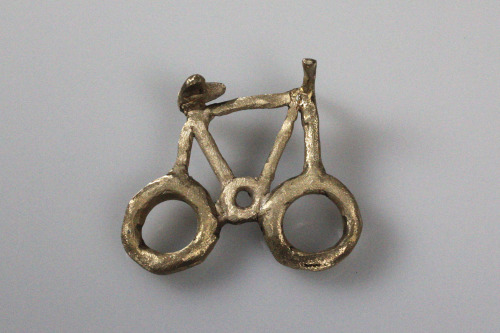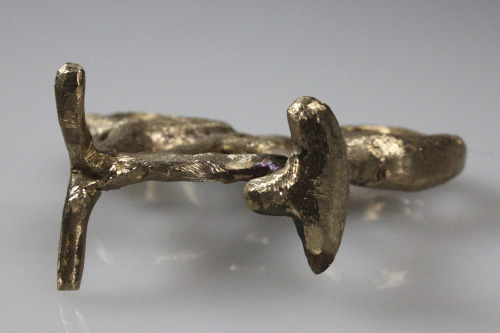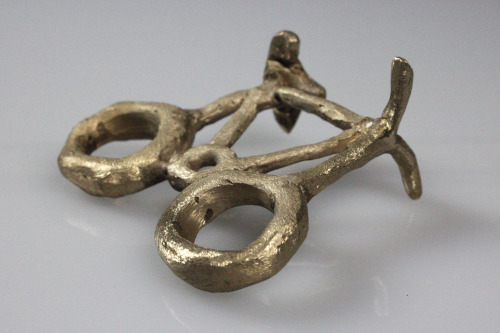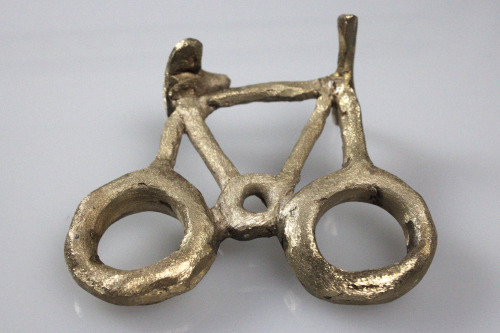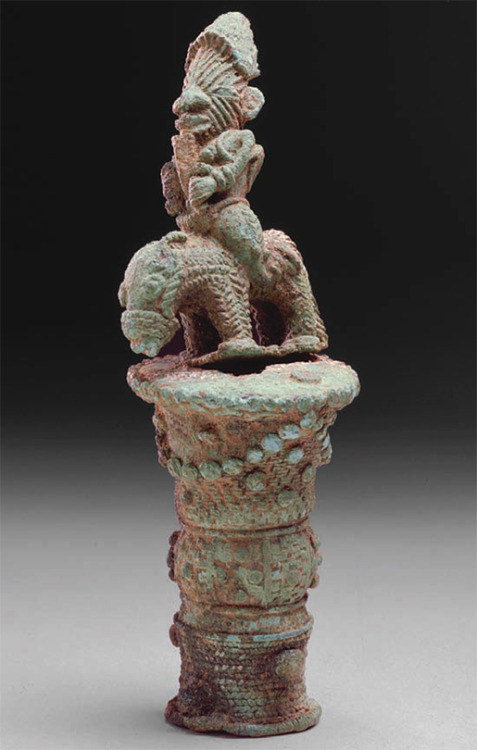#bronze casting
Equestrian Figure on Fly-Whisk Hilt
Igbo Ukwu, Nigeria, 9th to 10th century CE
The oldest known African lost-wax cast bronze is this fly-whisk hilt, which a
leader used to extend his reach and magnify his gestures. The artist exaggerated the size of the ruler compared with his steed.
(Read More Now doesn’t work here)
The relationships between leaders and art forms are strong, complex, and universal in Africa. Political, spiritual, and social leaders—kings, chiefs, titled people, and religious specialists—have the power and wealth to command the best artists and to require the most expensive and durable materials to adorn themselves, furnish their homes, and make visible the cultural and religious organizations they lead. Leaders also possess the power to dispense art or the prerogative to use it.
Several formal or structural principles characterize leaders’ arts and thus set them off from the popular arts of ordinary Africans. Leaders’ arts—for example, the sumptuous and layered regalia of chiefs and kings—tend to be durable and are often made of costly materials, such as ivory, beads, copper alloys, and other luxurious metals. Some of the objects made specifically for African leaders, such as stools or chairs, ornate clothing, and special weaponry, draw attention to their superior status. Handheld objects—for example, staffs, spears, knives, scepters, pipes, and fly whisks —extend a leader’s reach and magnify his or her gestures. Other objects associated with leaders, such as fans, shields, and umbrellas, protect the leaders both physically and spiritually. Sometimes the regalia and implements of an important person are so heavy that they render the leader virtually immobile, suggesting that the temporary holder of an office is less significant than the eternal office itself.
Although leaders’ arts are easy to recognize in centralized, hierarchical societies, such as the Benin and Bamum kingdoms, leaders among less centralized peoples are just as conversant with the power of art to move people and effect change. For example, African leaders often establish and run masquerades and religious cults in which they may be less visible than the forms they commission and manipulate: shrines, altars, festivals, and rites of passage such as funerals, the last being especially elaborate and festive in many parts of Africa. The arts that leaders control thus help create pageantry, mystery, and spectacle, enriching and changing the lives of the people. (x)
Post link
If you thought that sculptors were done once the clay comes out of the oven… Nope.
I’m currently finishing the wax model of my two-headed torso that I need to make the mold for bronze casting. Fixing errors, cracks, details that got lost in the process. That should take about a week. After that, it’s back to the caster, wait for them to get me a good bronze and look over this statue to fix mistakes and details that got lost etc. Only after that will it be time for the last phase: Patination (coloring).
That last phase will be done by someone else. I’m very prone to allergies and since coloring involves strong chemicals, I’m not going to take the risk.


